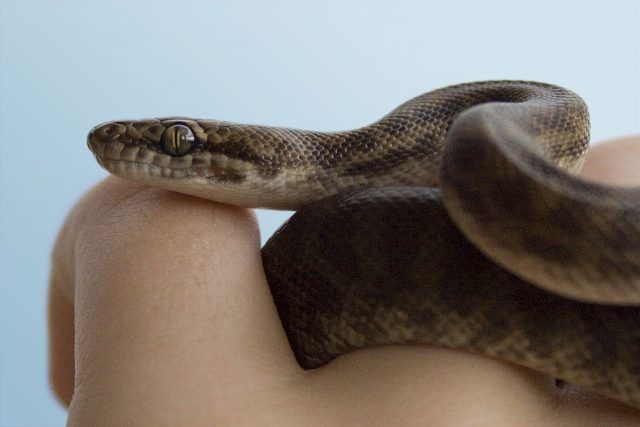Type the name of the breed you're looking for below
[wpdreams_ajaxsearchlite] Don't see the breed your're looking for? Click here and let us know!
Children’s Python
| Place of Origin and Range | A native species in the northern parts of eastern western Australia, the northern territory, and western Queensland, Australia. |
| Description | Small python with purplish-brown to tan irregular, poorly defined, small spots of dark reddish-brown on their back. These blotches form 4 rows, with the spots of the two dorsal rows merging to form large ovals. Juveniles are heavily blotched, but gradually become reddish brown or brown as they mature. |
| Morph Patterns Available | Yes |
| Adult Size | Can grow 3-4 feet(0.9 - 1.2m) |
| Accommodation | Dry woodland, rocky aridland or forest. To avoid injuries anchor any rocks in the vivarium before you add the substrate. You will want to include a large dish for bathing and soaking; to improve shedding. Always include a day basking spot at 80F(27C). Along with multiple hides this snake likes to hide in termit mounds in the wild. Minimum 2 x 2 x 4 feet for an adult. |
| Lifespan | Can live 15-20 years |
| Feeding / Diet | Like most snakes the Children's python can eat mice, rats, and chicks; depending on the size of your snake and the availability of feed. |
| Breeding | Oviparous, with up to 25 eggs per clutch. Females brood their eggs through a seven week incubation period by coiling around them and occasionally shivering to keep them warm, which also affords the eggs some protection from predators. |
| Other Considerations | Captive bred only available. Wild specimens are protected from commercialization. Snakes are relatively hardy low maintenance animals when kept in the correct environment, and require little day to day care other than feeding and cleaning out the tank as required. However, like all animals, they can still become sick or injured despite our best intentions to prevent this. |



